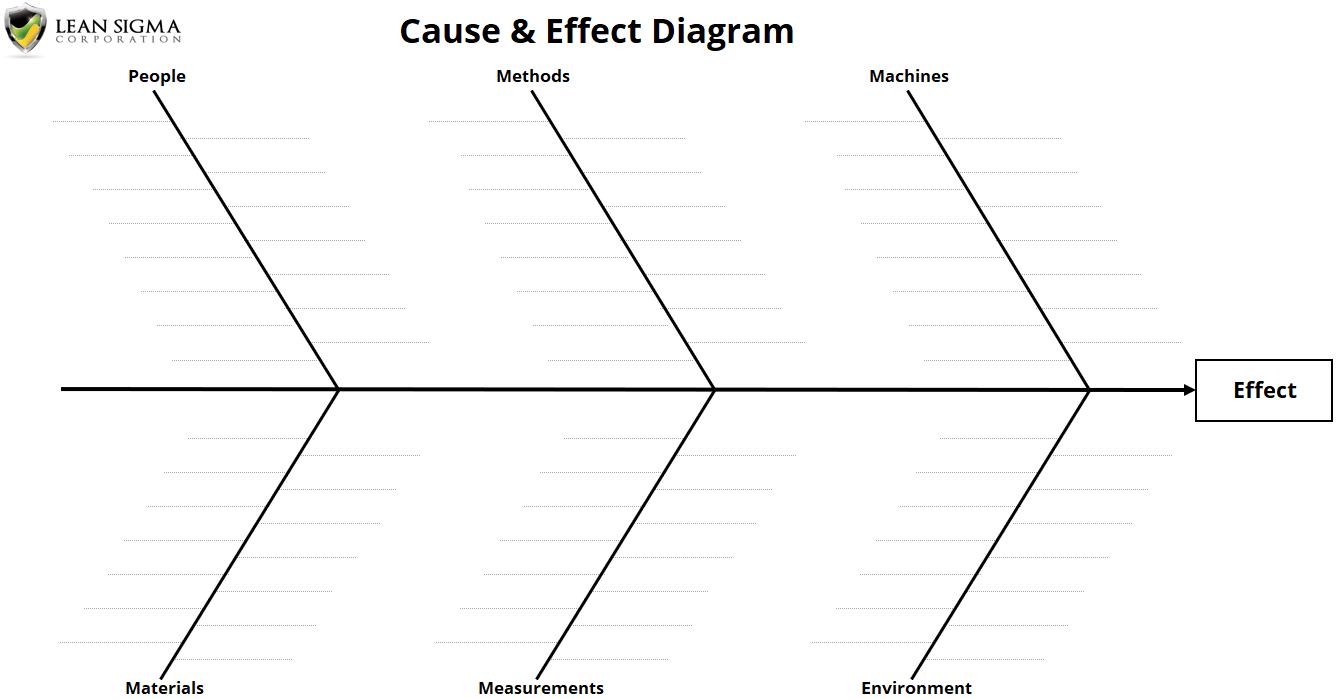Using a Cause and Effect Diagram
Introduction:
Cause and Effect Diagrams, also known as Fishbone Diagrams or Ishikawa Diagrams, are valuable tools used to identify and analyze the root causes of a problem or an effect. In this comprehensive guide, we will delve into the essence of Cause and Effect Diagrams, explore their origins, highlight their various names, elucidate their applications, and provide step-by-step guidance on how to use them effectively. By understanding the power of Cause and Effect Diagrams, individuals and organizations can gain valuable insights to drive problem-solving efforts and improve overall performance.
Origins and Alternate Names:
Cause and Effect Diagrams were first introduced by Dr. Kaoru Ishikawa, a renowned Japanese quality control expert, in the 1960s. Dr. Ishikawa believed that understanding the root causes of problems is essential for effective problem-solving. As a result, he developed the Cause and Effect Diagram as a visual representation tool to identify and organize potential causes.
These diagrams are commonly referred to as Fishbone Diagrams due to their resemblance to a fish skeleton. The diagram's structure resembles the spine of a fish, with the problem or effect at the head and the potential causes branching off as the "bones." Additionally, Cause and Effect Diagrams are also known as Ishikawa Diagrams, named after their creator.
How to Use the Cause & Effect Diagram:

-
- Define the "Effect"
Start with the "effect" or problem you want the team to brainstorm potential causes for. Enter the effect at the end of the horizontal arrow in your diagram. - Define the Categories
Several different category methodologies exist to help with structuring a brainstorming session. P4ME is one we use, it's an abbreviation representing: People, Methods, Machines, Materials, Measurements, and Environment. - Brainstorm
Use the categories to structure your brainstorming activities. Stay focused on causes to the "effect" and brainstorm all the potential reasons when something might have an "effect" on the problem. - Visualize
Use the template as you're brainstorming so the team can visualize their progress and what ground they have already covered. This template is for that purpose. As well as, the purpose of being able to document, present, share, and update your Cause and Effect Diagram - Prioritize
Now that you have a bunch of potential root causes for your problem or effect, it's time to prioritize them. Use the Cause and Effect Matrix for just this purpose. - Act
Once the causes are identified and prioritized, develop and implement targeted solutions to address the root causes. Continuously monitor the outcomes and refine the solutions as needed.
- Define the "Effect"
Conclusion:
By systematically analyzing and organizing potential causes, these diagrams facilitate collaborative problem-solving and enable organizations to develop effective solutions. Originally introduced by Dr. Kaoru Ishikawa, Cause and Effect Diagrams have become widely adopted across industries, supporting quality improvement initiatives and project management methodologies.
Whether in manufacturing, healthcare, or service industries, Cause and Effect Diagrams provide a structured approach to problem-solving. By following the step-by-step guide outlined in this article, individuals and teams can harness the true potential of Cause and Effect Diagrams to uncover valuable insights, drive continuous improvement, and ultimately achieve higher levels of performance and success. Embrace the power of Cause and Effect Diagrams to unlock the hidden causes behind your challenges and pave the way for meaningful solutions.




